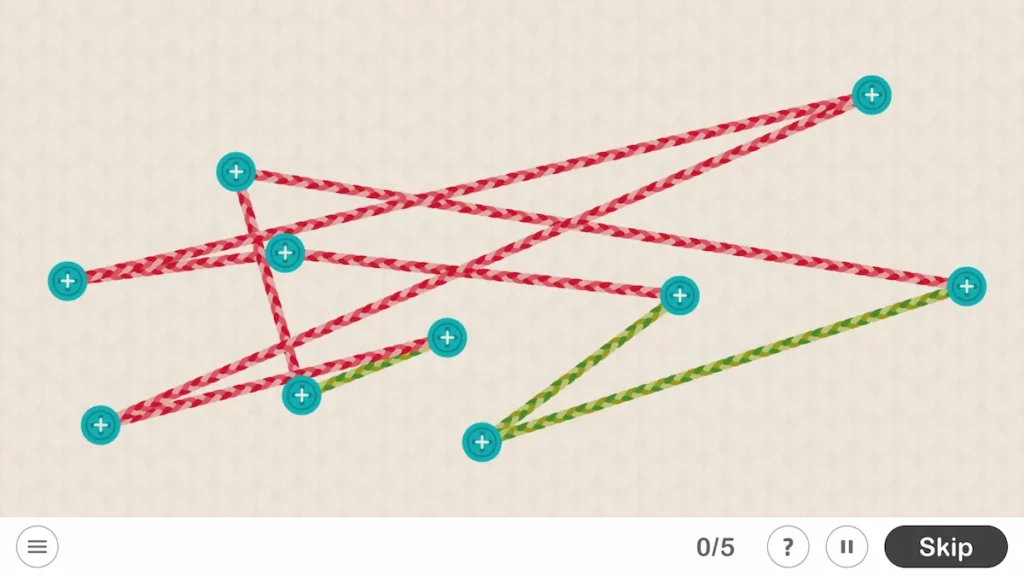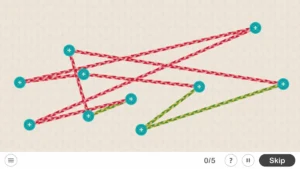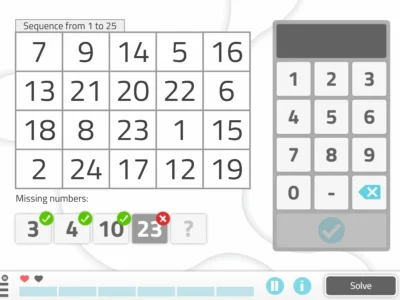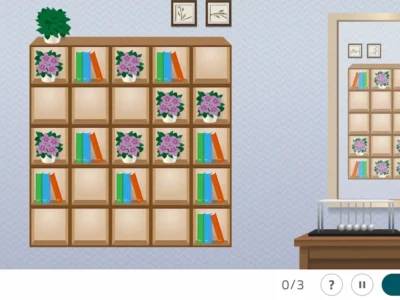Today we publish our new game Entangled ropes that trains spatial visualization in children.
What does this activity involve?
Below, we show you an example of the activity Entangled ropes:

What does this activity train?
By playing this game, we are training spatial visualization in children.
Tangled Strings consists of moving the vertices of the strings (the buttons) until the user manages to make none of the strings touch each other. When the strings are not tangled, they will be colored green.
Play by levels
This spatial visualization game for children is divided into twelve phases, with the first phase being the easiest and the twelfth the most difficult.
El user will move up or down levels according to their successes or mistakes. Additionally, the professional can choose the phase manually.
Activity customization
We can play this activity in several configurations:
Default with time:
In this configuration the user must click on the buttons and drag, without releasing, the string to complete the level. In addition, we will find the following settings:
- It has a maximum time to complete,
- it does not have a visible timer,
- the user must complete a total of 5 exercises to advance a level and must fail a total of 3 exercises to drop down a level.
Default without time- drag:
The user must click on the vertices of the strings and drag without releasing to untangle the string.
We will also play as follows:
- It does not have a maximum time to complete,
- it does not have a visible timer,
- the user must complete a total of 5 exercises to advance a level and must fail a total of 3 exercises to drop down a level.
Default with time press:
Unlike the “Default with time” configuration, simply clicking on the button and moving the mouse will move the string; there is no need to keep pressing for the entire movement of the string.
In addition, it will play with the following settings:
- It has a maximum time to complete,
- it does not have a visible timer,
- the user must complete a total of 5 exercises to advance a level and must fail a total of 3 exercises to drop down a level.
Default without time press:
The child, simply by clicking on the button, will be able to make the string move; they will not need to keep clicking until the movement finishes.
Likewise, they will also play with the following settings:
- It does not have a maximum time to complete,
- it does not have a visible timer,
- the user must complete a total of 5 exercises to advance a level and must fail a total of 3 exercises to drop down a level.
Application to daily life
We can relate this activity, due to how it works on spatial visualization and planning, to organizing school materials inside a backpack.
Our user will have to decide how to distribute them within the limited space of the backpack and ensure that everything fits efficiently.
This activity is recommended for children with ADHD, ASD and Developmental Coordination Disorder (dyspraxias).
If you enjoyed this sustained attention game for children, you may also be interested in these articles:
“This article has been translated. Link to the original article in Spanish:”
Juego de visualización espacial para niños: Cuerdas enredadas







 Prediction of player outcomes using TA-LSTM.
Prediction of player outcomes using TA-LSTM.
Leave a Reply